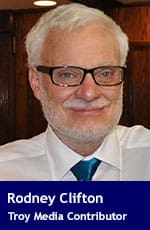 There’s little doubt that the condition of Indigenous people is desperate in Canada, especially for those living in the 600 or so small, isolated First Nations communities.
There’s little doubt that the condition of Indigenous people is desperate in Canada, especially for those living in the 600 or so small, isolated First Nations communities.
Most Canadians know some facts about the quality of lives of the people in these communities but let’s refresh our minds with a few statistics.
First Nations have the highest rates of incarceration, homelessness, poverty and welfare dependency. They also have the highest rates of infant mortality and suicides, and the lowest life expectancy of any racial or ethnic group in Canada. As well, reserve communities have the highest rates of sexual abuse, single motherhood, and alcohol and drug abuse.
This litany of disadvantages is depressing to all right-thinking Canadians. While many people remember some of these facts, hardly anyone knows what to do about the poor living conditions of these people.
However, at least three policies have been put forward by the federal government or First Nations leaders to improve the situation. All three, unfortunately, won’t help the people living in these communities.
| RELATED CONTENT |
| Indigenous communities see ocean of opportunity in oil and gas By Kerry Jothen |
| How to wean Indigenous communities off diesel By Joseph Quesnel |
| Indigenous communities deserve economic choice By Joseph Quesnel |
First, the federal government seems to think that spending more money is the best way to deal with living conditions on First Nations. But Tom Flanagan reports there has been a huge increase in the spending on Indigenous people over the last 10 to 15 years with little – or no – improvements in the quality of their lives.
Second, Bill C-15 was recently introduced in the House of Commons. It recommends the federal government accept the United Nations Declaration on the Rights of Indigenous People (UNDRIP), which outlines the way the United Nations expects countries to treat their Indigenous people. This declaration proclaims that: “the rights affirmed in treaties, agreements and other constructed arrangements between States and indigenous peoples are, in some situations, matters of international concern, interest, responsibility and character.”
As expected, Perry Bellegarde, national chief of the Assembly of First Nations, has claimed that when this declaration passes into Canadian law, it will get First Nation people much closer to self-determination. To Bellegarde, “The declaration is a tool for building a better relationship with Canada, in which treaty rights will be affirmed, respected and upheld.”
But if you read this declaration, you will see that it will only ensure that the United Nations becomes involved in negotiations taking place between Indigenous people and Canadian governments from the municipal to the federal levels. The court of last appeal will become the United Nations. If C-15 passes, Canada will be surrendering a considerable amount of its sovereignty to an international organization of questionable competence.
Finally, the Truth and Reconciliation Commission has said that approving the 94 calls to action in its report will lift the tremendous burden of poverty off the shoulders of Indigenous people. But like UNDRIP, a close reading of these 94 calls of action shows that they ask non-Indigenous people to spend increasingly more resources on Indigenous people without any assurance that the results will be accepted.
Three calls to action illustrate what is being requested – or demanded:
- We call upon post-secondary institutions to create university and college degree and diploma programs in Aboriginal languages.
- We call upon the federal government, in consultation with Aboriginal peoples, to establish measurable goals to identify and close the gaps in health outcomes between Aboriginal and non-Aboriginal communities and to publish annual progress reports and assess long-term trends.
- We call upon medical and nursing schools in Canada to require all students to take a course dealing with Aboriginal health issues, including the history and legacy of residential schools, the United Nations Declaration on the Rights of Indigenous People, Treaties and Aboriginal rights, and Indigenous teachings and practices.
These requests sound a lot like what the federal government has been attempting to do since a white paper on Indigenous policy was rejected over 50 years ago. That is, spending increasingly more money hoping that something positive will happen, but seeing that, in reality, very little has changed in the quality of the lives of Indigenous people living in First Nations communities.
There’s nothing in the calls to action that indicates that Indigenous and non-Indigenous people will respond in mutually beneficial ways. Because these calls are demands and there’s no obligation for Indigenous people to respond in a positive way even if all the demands are fulfilled.
The report says that if an Indigenous person doesn’t “feel” enough has been done, or if non-Indigenous people have not been sincere enough, then reconciliation has not resulted. According to the report, reconciliation can only be achieved when every Indigenous person feels satisfied.
Of course, self-respect and self-determination can’t be gained from demanding that other people spend money on you. Fundamentally, these human traits can only be sustained by doing things for oneself.
Thus, the 94 calls to action in the report are a pipe dream – a dream that will never come true because they continue the dependency that has caused many of the problems in the first place. The report recommends a continuation of the paternalistic, top-down relationship between Indigenous and non-Indigenous people that has created the present intractable situation.
So it seems that the three proposals now on the table are unlikely to improve the lives of Indigenous people.
But can anything be done?
There is one plan that could make a difference.
In the 2020 throne speech, Prime Minister Justin Trudeau said that he planned to establish a wealth tax.
A couple of years earlier, a scheme for helping poor people overcome poverty was suggested by Conrad Black, and it could easily be adapted to address the pressing needs of First Nations people.
Black suggests that a wealth tax of two per cent could be levied against Canadians with a net worth of $10 million or more. For example, an individual with a net worth of $10 million would be assessed $200,000 in wealth taxes. This person could then choose to pay the tax or invest the money in businesses and/or services that would help Indigenous communities.
A pressing need on many First Nations is employment opportunities. Because financially successful people could benefit from their investments, they will have an incentive to work with First Nations people, spending their time and talent in helping develop and manage businesses and services on First Nations.
While these wealthy Canadians will be investing their money, time and talent, Indigenous people and communities will be investing resources, too. These mutual investments will create reciprocal obligations between two groups with different resources and needs.
As the programs prospered, the income earned would be split in a fair way between the investors, the Indigenous employees and the communities. The income earned by the non-Indigenous investors would be taxed as income but the Indigenous employees would pay no income tax if they were working or living on First Nations lands.
If the businesses or services failed, the wealth tax would be charged the next year and would go to the government. Thus, there would be reciprocal incentives to turn First Nations’ human and physical resources into assets that would benefit Indigenous people.
In the words of Black, “In this way, the most commercially and financially astute people in society would have a vested interest in the elimination of poverty and the interests of the wealthiest and the poorest people in society would be exactly aligned.”
Building viable businesses and services on First Nations is the best way to build self-respect, self-determination and self-reliance. It’s also the best way of building co-operation between Canadians from different sectors of society.
Rodney A. Clifton is a professor emeritus at the University of Manitoba and a senior fellow at the Frontier Centre for Public Policy. His most recent book, edited with Mark DeWolf, is From Truth Comes Reconciliation: An Assessment of the Truth and Reconciliation Commission Report.
Rodney is a Troy Media Thought Leader. For interview requests, click here.
The opinions expressed by our columnists and contributors are theirs alone and do not inherently or expressly reflect the views of our publication.
© Troy Media
Troy Media is an editorial content provider to media outlets and its own hosted community news outlets across Canada.


